The creation of landscape design is a very difficult task, for which each gardener uses its methods and uses its plant collections. In addition to spectacular blooming crops, there is always very decorative plants on any plot, the main decoration of which their foliage is considered. Host is a bright copy of decorative crops that are popular among landscape designers and gardeners. This is especially true of a particular variety - the hosts of Aureomarginata. This plant surprises with its motley coloring foliage and the ability to easily endure the shady areas of the courtyard and the garden, where other cultures cannot grow. Thus, you can evenly fill out all the sections of the household territory and create unique compositions. The host of aureomarginata, landing and care for which they do not differ in difficulty, is a valuable copy in the collection of any gardener.
In order to competently and correctly grow this culture, in this article we consider the features and description of the host of the Aureomarginat, as well as we present the use of this plant in landscape design. We note the important points and the rules of growing the hosts of Aureomarginities in their garden.
Features and morphological description of the host of aureomarginata
The host is a decorative grassy perennial, who belongs to the kind of host and the large family of asparagus. More recently, these unique plants scholars have attributed to a completely different family of Lily, however, after a careful study of all species characteristics, they took the host to sparky plants. The host of Forka Aureomarginata, like other varieties of this kind, is considered a decorative-deciduous grassy plant, which is more valued for its bloom, and for the form and painting of foliage. The homeland of this culture is considered the territory of East Asia, the Far East, Sakhalin, Kuril Islands, and specifically the variety of the Host Aureomarginata comes from Japan, where this plant is still considered sacred, and its stems are used to prepare delicacies.
Host Aureomarginata Many gardeners were deservedly called the "queen shadow or queen of a shady garden." This is due to the fact that it is difficult to find another similar decorative plant, which will also perfectly feel in the shady sector of the garden. In nature, hosts can be found on the banks of the rivers and lakes, on wet and shady forest edges, on the mountain slopes. For the first time, this amazing plant was brought from the territory of Asia to England, where the host did not speak properly popularity. However, when the host of Aureomarginat fell into the United States, many botany and gardeners started talking about her, recognizing the beauty and effectiveness of perennial bushes.
The scientific name of this "host" plant was originated on behalf of the Austrian scientist Botany, who was engaged in the study of culture - N. Khosta. This representative of the Asparade family has another scientific name, which can also be found in the literature - Funkiya. This name was given a host in honor of the German Botany.
Description of the host of aureomarginat:
- The Host Aureomarginata is a perennial grassy, \u200b\u200bleaf fall plant, which is one of the most popular varieties of the species of the forged hosts.
- It is a fast-growing plant that forms beautiful and lush leaf curtains resembling shrubs.
- Today there are a large number of Host classifications that are based on the form of leaves, on their location and at the height of the bush. The Hosts of the Aureomarginata host refers to the "soaring" plants of this species, as the leaves grow almost horizontally the surface of the earth and fall out like a jet of water in the fountain.
- The root system of the Aureomarginat host is represented by a thickened compact and short-taut rhizome, which has a lot of cord-shaped roots up to 40 cm long. It is such a root system that allows the host to firmly entrenched in the soil and grow rapidly.
- The plant has no stem, decorative leaves are growing from the roots at once.
- The leaves are roasting on long cutters, have a beautiful heart-shaped, slightly rounded shape.
- In the height, all the plant can reach about 40-50 cm, in the diameter, the bush can also grow to 50 cm at a young age and up to 120-130 cm in more adult age.
- Sheet plate has a strongly embossed surface and a pointed form, they are fleshy and juicy.
- The foliage of the Hosts of the Aureomarginat and its size is distinguished. In length, they can reach about 20-30 cm, and in a width of 12 cm.
- This hostess variety boasts the spectacular coloring of foliage. At the young age, the leaves of the light green shade with a thick uneven border of a white-cream shade. With age, this garbage becomes less noticeable and more green.
- The leaves form a beautiful domed bush.
- The hostets are not so beautiful and decorative as the leaves of the plant, but they can also become an interesting jury of the bustle and the entire site.
- This variety the flowers are quite large, in diameter can reach 6 cm, have a bell form. Collected most often in creeping loose inflorescences, which are located on the top of long flowerons growing above foliage. The flowerons are almost completely naked without foliage, height can reach 70-80 cm.
- Flowers have a light lilac or purple shade, exuded a very pleasant aroma.
- If you do not need blooming hosts on the site, then it is recommended to cut the floral arrows to form symmetrical and dense curtains of the Aureomarginat hosts.
- Flowering falls for the period from July to August and lasts approximately for three weeks.
- If you allowed the colors to be filled, then fruits will soon appear in the form of leathery triangular boxes, in which there is a large number of seeds of the Aureomarginat host. Seeds retain the germination for one year.
- The Host Aureomarginate is valued for the fact that, depending on the site of the landing, the shade of its foliage can change, becoming even more decorative. If you put a host in the shade, the foliage will have a darker and rich green color. When landing on a more sunny section of the foliage will be light color.
- This type of host is a frost-resistant plant that moves well well. In addition, the plant is resistant to various diseases and pests, it differs and unpretentious in care.
Using the host of aureomarginate in landscape design
The host Montana Aureomarginata is a beautiful and very spectacular plant that is actively used to decorate the site. Today, landscape designers are in service with a large number of applications of this plant in the creation of garden compositions.
- The most often of the Aureomarginate host is used as a soil plate, which is planted to fill the garden in the shade. These plants can be landed under the shadow of garden trees or in the shade of large buildings and household buildings.
- Ideally, this culture is suitable for creating a natural landscape on the plot.
- If there is an artificial reservoir or pond on your site, you can land the Host of Aureomarginat on the shore in combination with other moisture-loving plants.
- This kind of decorative plants is an excellent background for other cultures: blooming and decoratively deciduous.
- Many gardeners use the host of this variety for the framing of garden tracks or borders.
- Beautifully look at the group landing of the host of this variety on the lawns on the background of a green lawn or in a totality with other varieties of this culture.
- This plant is grown and in pots, which can then be put on terraces or in front of the arbor.
Aureomarginat host reproduction: the most common ways
The host is an unpretentious plant that can even grow even a novice gardener. To get beautiful and lush curtains on your site, it is important to know the most common methods of breeding. The Aureomarginata host multiplies with the help of seeds, the extension method and the division of the bush. Each multiplication option is characterized by their peculiarities and rules that are important to consider to obtain beautiful and healthy plants. Consider in more detail the technology of the main methods of reproduction.
Seed reproduction of the host of aureomarginata
- This type of breeding is used not as often as vegetative options for the reason that young plants may not receive the entire set of maternal signs. In addition, the process of obtaining hosts from seeds is quite laborious and long.
- It is also important to remember if you independently collect the seeds of the host of aureomarginat, then they need them to search for one year, since it is precisely during this period their germination.
- The germination of seeds of this plant is approximately 70-80%, so gardeners are recommended before sowing to process the planting material in growth stimulants. The seed stratification is also suitable. For this, the prepared seeds are placed in the refrigerator department.
- The seeds of the host of this variety are sown in April or in May.
- Before sowing, it is necessary to carefully disseminate the containers for planting and soil. To this end, they are treated with a solution of mangartan or alcohol. Soil mixture can also be hired in the oven.
- Next, on the bottom of the containers, place a layer of drainage from pure large sand or small stones. The next layer is poured soil mixture consisting of peat and sand.
- Be sure to sprinkle the soil before sowing seeds.
- Uniformly distribute the seeds of the Aureomarginat host on the surface and suck with a soil with a thickness of up to 5-7 mm.
- The container from the seeds is necessarily necessary to cover with glass or film, after which it is to put it in a slightly privided place.
- The optimal temperature for germination of seeds is 18-25 degrees.
- In compliance with all necessary requirements, the first shoots will appear after 3 weeks.
- Seedlings require regular care, which should be in watering and ventilating. Water through the pallet and take the glass to remove the condensate.
- When the outdoor temperature is not lower than 18 degrees, crops can be taken to the street for hardening.
- With this method, it is important to remember that the young plant develops very slowly. Decorative bush receives its unusual coloring only to 4 years.
Reproduction of the host of aureomarginate dividing bush
- This method is more popular and fast, in comparison with the previous method.
- It is necessary to apply the division of the bush very carefully, since young plants after such reproduction can be poorly recovered and to measure in development for several years. Therefore, it is recommended to use the division of the bush only for adult plants, which have already achieved 4-5 years.
- It is best to multiply the Host of Aureomarginata in this way in spring or late in summer, although in the presence of great horticultural experience it can be carried out during the entire season.
- Separating the plant is necessary very neat. First of all, dig it from the soil and put on the cut of the tissue or paper. Next, take the pitchfork, insert them into the rhizome host and carefully spread to the sides. So you divide the rhizome into several parts, while causing a plant is less harm than when cutting.
- It is important that each decene has a well-developed beam or a rosette of leaves.
- You can split the host without the need to dig it. In this case, a small part of the rhizomes with leaves is separated from the bustle. The resulting void is important to fill the nutrient soil mixture.
- After separation of the deduction, the plants are planted for a permanent place, which is pre-prepared.
Aureomarginate Hospital Reproduction
- Gardeners most often use the reproduction of the host of this variety with the help of cuttings. This method is characterized by simplicity and receiving a quick result.
- Highlighting the host of Aureomarginata is recommended to be carried out from May to July.
- On an adult bush, you need to choose young and healthy sockets with short-sized small leaves, which are easily separated with the heel.
- This is further important to prepare the planting material before rooting. If the cuttings leaves the leaves are large, then it is necessary to cut them about half to half, so that the extra moisture does not evaporate.
- At the next stage, it is important to prepare the soil mixture, thoroughly switch and explode.
- After that, fall out the prepared cuttings, slightly prodiv.
- It is important to regularly spray and water roofed cuttings to ensure comfortable conditions for their growth.
- Do not be afraid if, in the first days after rooting, young seedlings of the Host Aureomarginata will become sluggish and lifeless. This is a normal phenomenon for this culture - the plant will quickly go away.
Preparation before landing the host of aureomarginata
Landing the host of aureomarginata is a completely simple process that will depend primarily from thorough preparation. This plant is a challenge culture, so it is so important to choose the right place to fit so that the leaves of the hosts were surprised by their beauty and a motley tint.
Stage 1. Selection and purchase of landing material of the Hosts of Aureomarginata
- First of all, it is necessary to take care of purchasing high-quality and healthy planting material.
- If an adult plant of the Host Aureomarginata is already growing on your site, then you can use one of the methods of reproduction of this plant to get seedlings. If you have no time or opportunities for it, then the planting material can be bought.
- Buy the seedlings of the hosts of this species better in specialized garden centers or nurseries who are professionally engaged in breeding plants. Here you will receive not only high-quality landing material that will meet all your requirements, but also get a competent consultation of specialists in the cultivation of Aureomarginat in your climatic region.
- If you buy seedlings in your district nurseries, you will get hardened and adapted sprouts to your climate.
- It is best to acquire rhizome hosts with already matured kidneys and small sprouts of leaves. In addition, the roots of the plant should not be too long, the maximum length should be approximately 10-12 cm. At the same time, the roots themselves should be elastic and elastic, have a healthy and well-groomed species.
- If you buy seedlings in pots, then pay special attention to the soil in the container. It should be clean and moistened.
- Also need to remember if you bought seedlings a little earlier of the time when you are going to plant, they need to store them in a dark and cool room. It can be a basement or vegetable shelf in the refrigerator.
Stage 2. Selection of landing place for the host of aureomarginata
- The host of Aureomarginata is a volatile variety, so it is very important to choose the right place to fit. The main thing is to keep the shade of foliage.
- When landing this plant, you need to adhere to one rule: the brighter of the Hosts varieties, the more open and solar place is selected.
- To do this, you need to choose a place where the plant will be covered with sunlight in the morning and in the evening, but be in the shade at noon. So you will get very spectacular motley leaves.
- It is also important to choose a place on your site, protected from strong wind and drafts.
- It is not recommended to plant seedlings on an open area with a constant ingress of sunlight, as the plant can get strong burns and die.
- Choosing a place for landing the host of aureomarginate is important to base on the existing landscape, and it is also important to remember that this is a fairly high and volumetric plant.
Stage 3. Choice and soil preparation for landing the host of aureomarginata
- Although the host of aureomarginata is considered an unpretentious plant, it is still important to choose a nutrient and fertile soil for it.
- Hummous subline soils with moderate moisturizes are best suited. Do not land this plant in dry sandy and heavy clay soils, here the host can die.
- The soil at the selected place should be moisture-permeable and breathable. That is why it is preferable if in the soil there is a large number of microorganisms and worms that are loosened.
- It is also important to pick up soil with a weakly acidic or low-alkaline reaction.
- The selected area should not be very wetched or moistened, the presence of a good drainage is welcomed.
- Before boarding the selected area, it is necessary to thoroughly and explode.
Aureomarginat Hosts Landing Technology
- Planting young seedlings of the Hosts of Aureomarginata in open soil is necessary in spring from about April to May or in the fall in September-October. Many gardeners recommend choosing spring time.
- At the selected area, it is necessary to prepare landing pits. The host of this variety is very quickly growing and in diameter can reach 50-130 cm, so the wells are in depth of approximately 30-40 cm, and the width is much greater to be able to straighten the roots.
- If you sit down several seedlings nearby, be sure to take care of the free distance between them, which should be approximately 50-100 cm.
- At the bottom of the landing pit, put a good layer of drainage, which will prevent stagnation of moisture from the roots.
- From above on a drain layer, pour a small hilly of fertile soil.
- Next, prepare the seedlings for the landing, it is plenty of water with water in containers, and then carefully remove the plants along with the ground and place them in the prepared wells.
- Carefully straighten the roots along the prepared holly so that there are no emptiness under them.
- Pour seedlings with soil and well superate soil, after which a plenty of planting with water.
- It is also recommended to climb the soil around seedlings with sawdust or bark, which will save moisture from the roots and reduce the amount of irrigation.
Agrotechnical cultivation of the host of Aureomarginata: Secrets and nuances of care
The care of the aureomarginate host is quite simple, even an inexperienced gardener will cope with all the growing stages. However, some nuances of care are still important to remember and take into account.
- Watering. The Host of Aureomarginata, like the other varieties of this culture, is considered a moisture culture, so it is important to clearly observe the regularity of irrigation. It is recommended to water seedlings about 2 times a week. At the same time, water should be strictly under the root, trying not to fall on the leaves, as they can start rot. It is also recommended to water a little water pressure so that the moisture accurately hit the roots. You can focus under the leaves - if their edges darkened a little, then the host lacks moisture.
- Loosening and mulching. Since this plant prefers to grow in breathable soils, it is important to regularly ploy the surface of the soil around the seedlings. Delete all weeds. To reduce the amount of irrigation, ground around the plants must be mounted. Several times per season Mulch must be changed.
- Feeding If the host of the aureomarginata was planted on fertile soil, then the first 3-4 years should not feed this plant. It is recommended to make fertilizer 3 times per season, so you will enable all the necessary elements. The first time the feeding is carried out during the period of active vegetation, the second time before flowing, the third time after flowering. For this plant, it is preferable to use organic fertilizers in the form of humus or compost, which is added in the form of mulch in the fall. If you use mineral fertilizers, it is best to give preference to granular.
- Trimming. Trimming this plant is not needed. It is enough to cut the floral arrows if you want to get a more magnificent bushings of the host, and remove yellowed and damaged leaves.
- Preparation for winter. The Host of Aureomarginata is considered a frost-resistant plant, so in warmer areas this plant is not covered at all. In the central part of Russia, it is better to climb the host with humus and foliage before the onset of winter.
Host Aureomarginata - Photo
The host of Aureomarginata is a beautiful and spectacular plant that will become the central decoration of any site, and it will not require great efforts to care and cultivation.

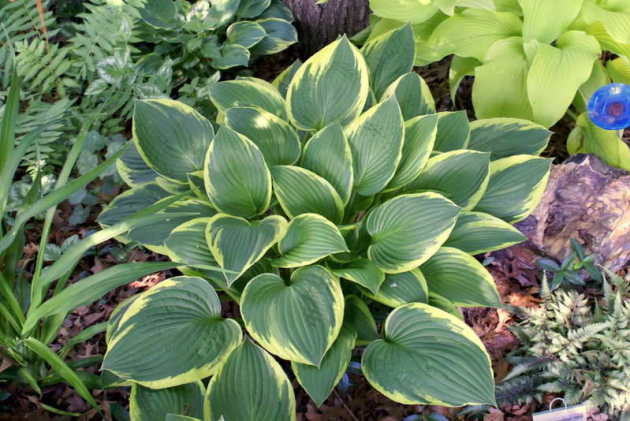
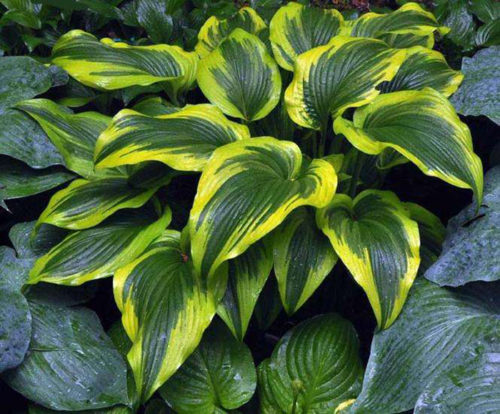
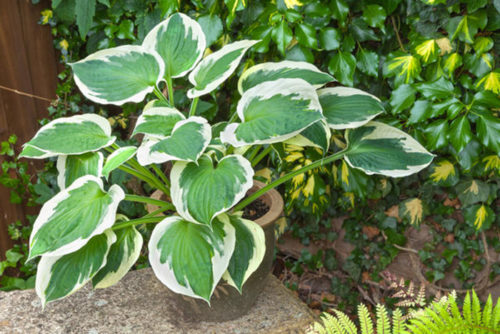
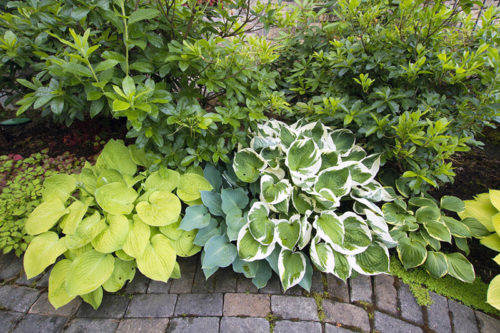
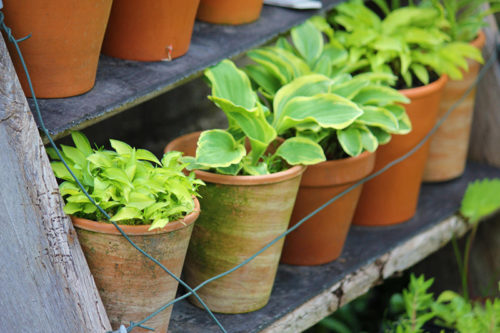
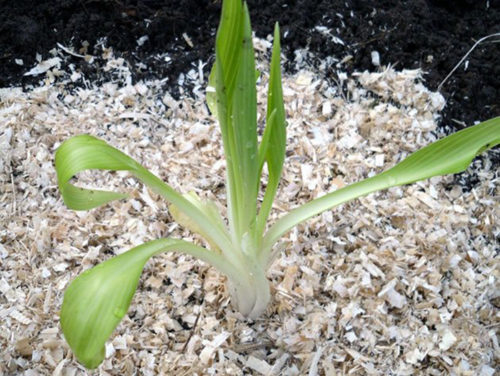
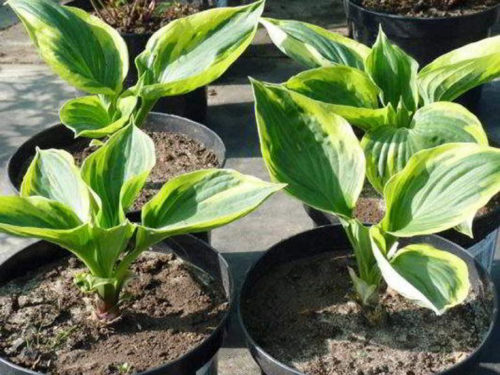
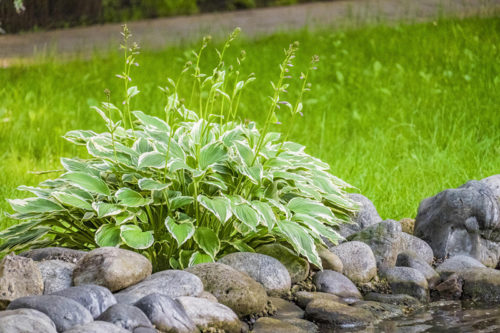
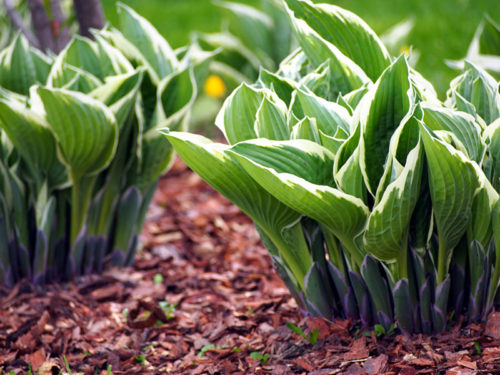
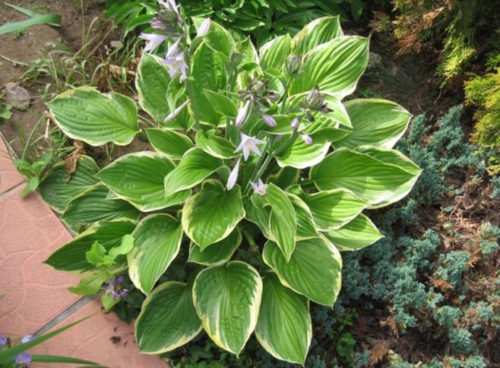
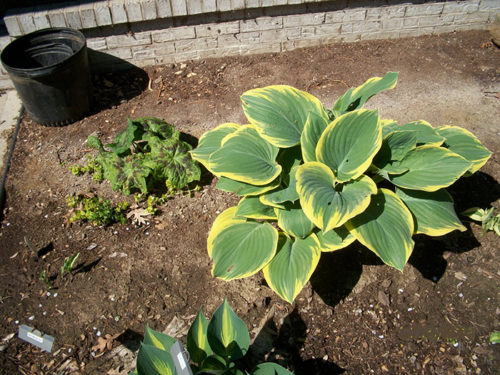
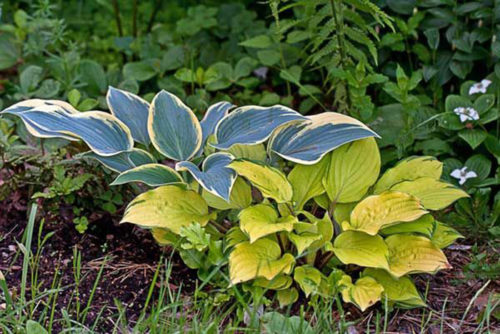
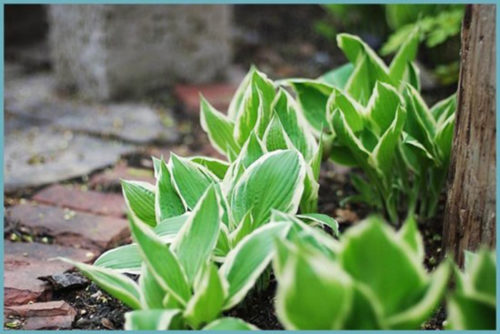
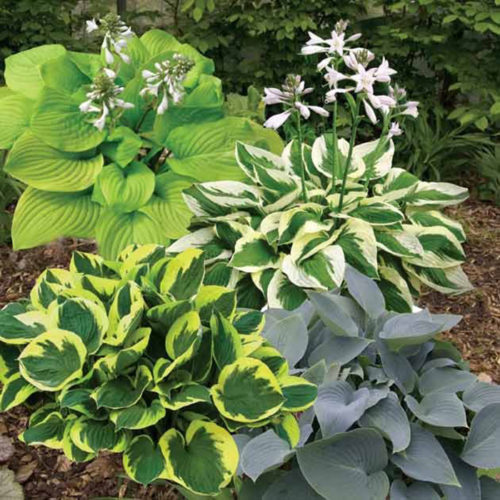
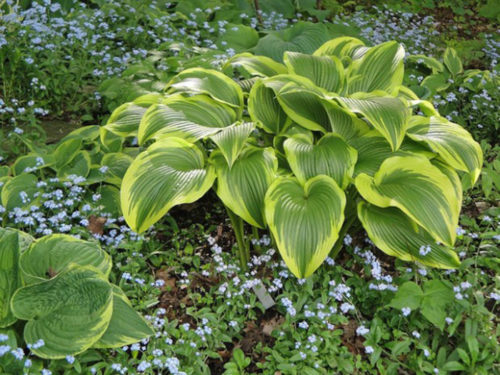












 Start a discussion ...
Start a discussion ...